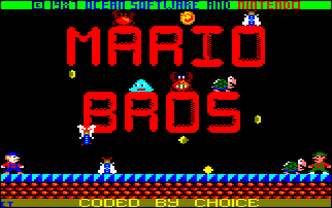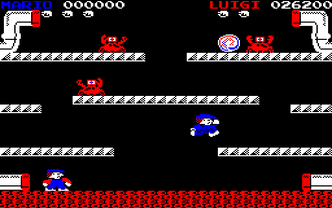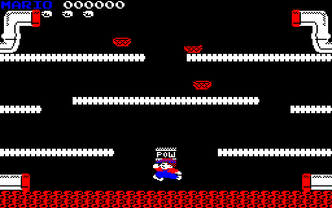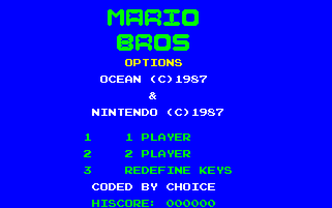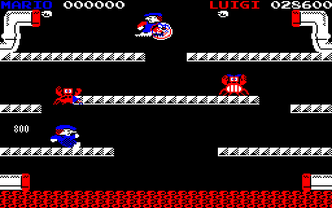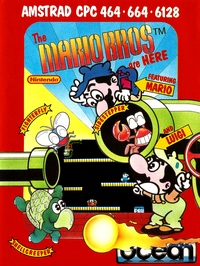Navigation:
Mario Bros. Amstrad CPC
This game entry is not "published" yet and will not appear in game browers by default! (Edit and set publish = 1)
Mario Bros. from Nintendo for your home computer! From the arcade original featuring Fireballs, Sidestepper, Shellcreeper and Fighterfly. Flip those pests and kick'em off the pipes, but don't lose your footing on those slippery floors. Play as a team or against each other; either way you're in for a scream with Mario ad Luigi - the MARIO BROS. — Cassette cover
Mario Bros. features two plumbers, Mario and Luigi, having to investigate the sewers of New York after strange creatures have been appearing down there. The objective of the game is to defeat all of the enemies in each phase. The mechanics of Mario Bros. involve only running and jumping. Unlike future Mario games, players cannot jump on enemies and squash them, unless they were already turned on their back. Each phase is a series of platforms with pipes at each corner of the screen, along with an object called a "POW" block in the center. Both sides of every phase feature a mechanism that allows the player to go off-screen to the left and appear on the right and vice versa.
Mario Bros. is one of the first platform games ever created, along with Donkey Kong. It also introduced Mario's brother, Luigi, who was created for the multiplayer mode by doing a palette swap of Mario. The two-player mode and several aspects of gameplay were inspired by an earlier video game called Joust. To date, Mario Bros. has been released for more than a dozen platforms.
Despite its innovations, Mario Bros. was not a major success in North America due to the video game crash in 1983. It did however receive a number of home versions on the Apple II, Atari 2600, Atari 5200, Atari 8-bit computers, Atari 7800,Amstrad CPC, and ZX Spectrum. The Commodore 64 had two versions: an Atarisoft port which was not commercially released and a 1986 version by Ocean Software. The Apple II port, programmed by Jimmy Huey of Designer Software, was the only home version of the game to feature the falling icicles.
Source:Wikipedia
